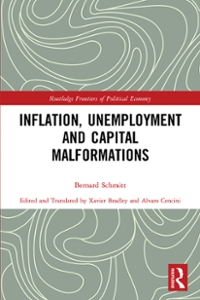Results Table 1 Table 2 SUMMARY of the OUTPUT for the URGENT HEALTHCARE CLINIC egression Statistics Multiple R 0.948226547 R Square 0.899133584 Adjusted R Square 0.885684728 Standard Error 839.1882756 Observations 35 ANOVA df SS MS F Significance F Regression 4 188329215.7 47082303.93 66.85576941 1.64884E-14 Residual 30 21127108.85 704236.9618 Total 34 209456324.6 Coefficients Standard Error t Stat P-value Lower 95% Upper 95% Lower 95.0% Upper 95.0% Intercept 11188.81987 3812.381291 2.934863808 0.00634506432 3402.898568 18974.74118 3402.898568 18974.74118 X Variable 1 - P -43.13833013 10.8664516 -3.96986355 0.00041479089 -65.33058494 -20.94607533 -65.3305849 -20.94607533 X Variable 2 - Px 6.851398997 8.494944815 0.806526605 0.426287085 -10.49759282 24.20039081 -10.4975928 24.20039081 X Variable 3 - Ad 0.0228035721 0.00690708715 3.301474507 0.00248972487 0.0086974183 0.036909726 0.008697418 0.036909726 X Variable 4 - I 0.106554043 0.0510125646 2.08878036 0.0453131984 0.00237248745 0.210735599 0.002372487 0.210735599Results Table 1 Table 2 Table 1 - Urgent Healthcare Clinics (35 Markets) Demand Price Competitor Advertising Income Market (Q) (P) Price (Px) (Ad) (1) 16,611 199.62 200.52 200,259 54,880 16,453 168.20 198.00 204,559 51,755 19,201 138.66 142.00 286,647 59,955 12,258 218.01 222.30 188,025 52,000 18, 142 158.00 156.02 287,422 58,491 17,973 157.00 158.36 266,224 57,219 13,024 208.20 209.15 177,954 48,685 WNJOO VOUAWN 15,004 189.01 188.97 200, 139 52,219 16,254 187.96 187.52 200,215 54,775 12,880 222.42 221.27 180,728 54,932 16,784 147.94 152.66 206,603 58,092 17,468 128.47 129.68 228,620 54,929 19,866 118.99 220.00 290,241 56,057 14 17,941 129.72 127.38 252,777 55,239 15 17,707 138.46 138.20 247,300 57,976 16 17,215 148.37 149.43 248,765 59,576 17 17,427 148.36 149.28 249,957 57,454 18 12,320 228.19 220.00 181,317 48,480 19 12,400 208.50 208.38 194,393 50,249 20 15,004 158.34 157.67 205,699 54,696 21 17,581 147.54 149.08 242,270 58.600 22 19,880 129.89 127.10 275,588 60,472 23 14,684 178.76 179.22 200,667 53,409 24 15,468 188.39 189.65 237,816 52,660 25 11,213 228.42 232.00 209,031 50,464 26 18,735 148.82 158.97 269,934 56,525 27 13,830 159.10 158.22 200,921 49,489 28 17,803 149.77 148.96 259,358 49,375 29 19,009 130.07 137.76 288,787 58,254 30 19,213 120.55 128.75 292,270 52,600 31 19,735 118.79 118.99 295,588 54,472 32 13,830 209.50 220.23 187,667 46,409 33 17,803 149.55 149.75 257,816 57,660 34 19,009 123.00 129.99 289,031 60,464 35 16,789 148.91 147.96 246,246 52,017 Mean 16,471.835 163.81 168.95 235,738.114 54,586.543 HO: b1 = b2 = b3 = b4 = 0 HA: Null Hypothesis is not trueResults Table 1 Table 2 Table 2 - Estimated Demand Function for the Urgent Healthcare Clinic Estimated Standard Error Computed Variable Coefficient of Coefficient t-statistic (1) (2) (3) (4) (2) / (3) Intercept 11188.81987 3812.381291 2.934864 Price (P) -43. 13833013 10.8664516 -3.96986 Competitor Price (Px) 6.851398997 8.494944815 0.806527 Advertising (Ad) 0.0228035721 0.00690708715 3.301475 Income (1) 0. 106554043 0.0510125646 2.08878 Coefficient of Determination: R2 = 89.91 % Adjusted R2 = 88.57% F Statistic = 66.86 Standard Error of the Estimate = SSE = 839.19 Observations = 35Demand Estimation for the Urgent Healthcare Clinic Consider the hypothetical example of the Urgent Healthcare Clinic (UHC), a chain of urgent care facilities in 35 regional areas across the US. Management of the Urgent Healthcare Clinics has initiated an empirical estimation of customer traffic at their 35 regional locations to help the clinics formulate updates to patient pricing and possible expansion plans for the coming year. Annual operating data for 35 regions appear in the attached spreadsheet (Table 1). Regression results also in the spreadsheet (Results/Table 2). The following regression equation was t to these data: Q; = b0 + bIPt. + bszl. + b3AdI. + (3411. + u\". Where: Q is the number of annual patients serviced, P is the average price charged per patient visit (patient amount, in dollars), PX is the average price per patient charged by competing facilities (in 3) Ad is the local advertising budget for facilities in each region (in 3), I is the average income per household in each region Is service area, at. is a residual (or disturbance) term. The subscript indicates each of the 35 regional markets (i = 1,. . ., 35) from which the observation was taken. Least squares estimation of the regression equation on the basis of the 35 data cross-sectional observations resulted in the estimated regression coefcients and other statistics as shown in the results and in Table 2. A. Describe the economic meaning for the individual independent variables included in the Urgent Healthcare Clinic demand equation. Interpret each estimated coefcient and its impact on the dependent variable (number of patients serviced)? E. Briefly explain the terminology of the coefficient of determination (R2). If one of the independent variables was found to not be statistically significant, what changes might you perform to the original regression equation? F. Develop the null and alternative hypothesis and conduct an F-test for the complete set of coefficients in the equation to determine the significance at the 95 and 99 percent levels











